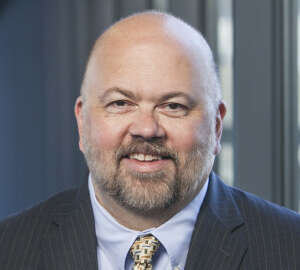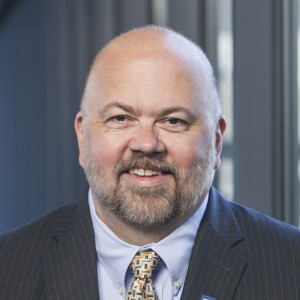

If you go to a typical agency and ask HR folks what they think their role should be, you will get different answers from everyone.
This column was originally published on Jeff Neal’s blog, ChiefHRO.com, and was republished here with permission from the author.
In a word, no. After spending over 30 years in federal HR, I hate to admit that the HR apparatus I was a part of (and still engage with) is generally broken. But facts are facts. From the making of laws to the writing of regulations, on down to the structures and processes of operating offices around the government, federal HR is struggling and often failing.
Why do I say that? We have a broken hiring system. Training is not a priority. Customers complain that they cannot get good service in many agencies, except from a handful of HR superstars. Job applicants are treated more like products than people. Despite the efforts of a lot of good HR folks, from almost every perspective the HR function is broken.
The problems are not the fault of the majority of HR practitioners. Most agencies have a lot of dedicated HR folks. They work hard and do their best with the rules and tools they have to work with, doing the work the way they were taught to do it. The problem is that the rules and tools are inadequate and the way most people are taught to do the work was OK in the last millennium, but not in this one.

This post is the first of a series that looks at what is wrong with HR and some ideas on how to fix it. I am not talking about tweaking it around the edges. The entire federal HR process and structure, from top to bottom, from the Office of Personnel Management to HR offices to federal managers, needs to be completely reimagined.
We can take the usual approach and train a few folks, throw in some category ranking, add a special hiring authority here and there, and tell people to work smarter, harder and faster. What will be the result? More of the same. We have been taking this incremental approach for so long that some folks have lost sight of the fact that HR is an absolutely mission critical job. Without good HR, agencies cannot hire the talent they need, train them, or take care of them.
Last week I wrote about comprehensive civil service reform and the need for it to be high on the next president’s to-do list. So let’s say President Trump or Clinton or Sanders or Cruz or Kasich decides to take it on and push for civil service reform. And let’s say Congress agrees and passes something to modernize the civil service. What happens next? We give it to OPM, department and agency HR folks, and operating HR offices and hiring managers to implement. And then it comes apart.
OPM will be exceedingly cautious in how it implements reform, and the agency and operating HR folks will try to fit it into the way they have always done business. A lot of the managers will assume it is the responsibility of the HR folks. Without a complete rethinking of the HR apparatus that runs federal HR programs, reform is less likely to succeed.
Let’s start with looking at the role of HR folks. If you go to a typical agency and ask HR folks what they think their role should be, you will get different answers from everyone. Some will tell you that HR is there to serve the employees. Others will say they serve the managers. Still others will say they are there to serve the mission of the agency. Others will say they are there to protect the merit system (sometimes acting like the merit system police). Some will say their role is strategic and that’s why they should be offering people strategies for the agency. Others will say they are there to process paper and make the trains run on schedule. In some respects, all of those perspectives are accurate. HR has all of those responsibilities. It is also far more than that.


Those responsibilities are executed by HR specialists whose jobs are, to a large extent, much like they were 10 years ago. Or 50 years ago. The typical HR office has some combination of generalists and specialists, and some combination of staffing, classification, employee and labor relations, and training. much of that work is done the same way it has been done for the last 50 years. The technology is different, but the basics of the jobs have been surprisingly static.
Is it any surprise that organizations built from the same old collection of building blocks always look like some variation of the same building? We have changed some laws, regulations and technology. But we have not taken a step back and tried to do a design HR offices and their component parts from scratch. It is time to do that. We have to lay out what the responsibilities of HR staff and the managers and employees should be, and then design jobs and organizations that can carry out those responsibilities.
In a later post I will lay out some ideas on how to do that. Those ideas will not be just a rearranging of the current roles and jobs, or a rehashing of the virtues of specialists versus generalists or vice versa. They will also include some jobs that do not exist in typical HR offices today.
I will also lay out some ideas on how to restructure the regulation and policy making organizations, including OPM and the Office of Management and Budget. Any fix has to include the regulations that are the framework upon which federal HR is built. Without addressing the foundation, we cannot address the structure we build on top of it.
Any rethinking of HR also has to look at the customer experience. What is it like to be a customer of the federal HR apparatus? What do those customers need? How do they get information? How do they transact business? Do they need different ways of interacting with HR based on what they need done? Do different groups of customers have different needs? How does HR measure customer satisfaction? How does HR interact with applicants? How do those applicants conduct business with HR and hiring managers. That customer perspective is often lacking in HR.
We also have to address the responsibilities of federal managers and employees. HR is not solely the responsibility of HR folks. They obviously have a big role to play, but so do managers and employees. I plan to lay out some ideas on what those roles are and should be, along with what they need to be able to carry out their responsibilities.
If we seriously want good people programs in government, we have to think about them in a rational way. We cannot simply rearrange the parts and pieces and expect to get radically different results. Everyone involved, including the current HR staff and their customers, deserves better.
Jeff Neal is a senior vice president for ICF International and founder of the blog, ChiefHRO.com. Before coming to ICF, Neal was the chief human capital officer at the Department of Homeland Security and the chief human resources officer at the Defense Logistics Agency.
Copyright © 2024 Federal News Network. All rights reserved. This website is not intended for users located within the European Economic Area.
